My Zero Waste Coffee Routine
Earlier this year, my old coffee machine finally gave up the ghost. It’s a miracle she lasted as long as she did: given to me second-hand, a bottom-of-the-range model that made surprisingly good coffee and survived almost daily use for seven years.
She had a couple of repairs and fixes in her time…

…but finally the pump went, and she was officially declared life-expired.
What remains is a mix of plastic, metal and electronic parts that are hardly a recycler’s dream. The metal will be recycled, but I don’t hold any hope for the plastic parts (which is most of it).
I didn’t want a replacement machine that was going to go the same way as this one. I wanted one with less bells and whistles (or rather, bits that can break and plastic parts), something made to last, much more repairable, and recyclable (if it comes to that).
Sure, I’m familiar with the French Press, and the stove-top espresso maker (also known as the moka pot). But the old machine made a proper espresso. And I wanted the replacement to do so too.
My answer was a lever press espresso machine: these create pressure to make espresso not through electricity and pumps but through manual levers and muscle power!
Many lever press espresso machines do not require electricity (although you need hot water to make hot coffee).
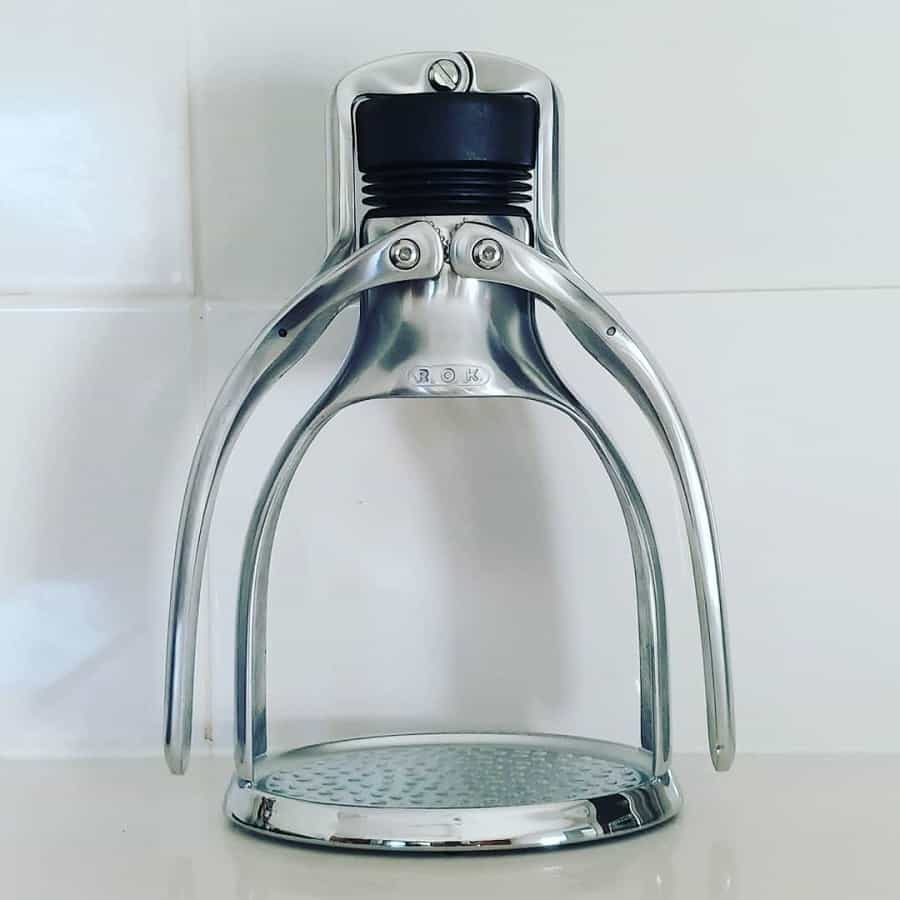
This machine is called the ROK espresso GC, made by ROK. There are a few different versions of lever press espresso machines on the market (and some of the price tags will blow your mind) but this one was the clear winner for me, not because of aesthetics (although she is stunning, for sure) but because of the ethos of the company behind the product.
Lots of companies say they are committed to sustainability but ROK really demonstrate these values with everything they do.
- The plastic parts are minimal. Nor do they ship in plastic. The main body is made of die-cast aluminium (completely recycable, hurrah);
- They offer a 10 year warranty on all metal parts, and sell spares of the other parts;
- ROK was originally called Presso, and the design was slightly different. When they switched to the current design (the GC), they launched a conversion kit meaning all current owners could upgrade their existing model without having to buy a whole new machine;
- They won ‘Most Sustainable Product’ in the kitchenware category at the 2019 Buy Me Once Excellence Awards, who judge brands on their commitment to sustainability, durability, aftercare and eco-innovation.
When I emailed ROK to talk sustainability, they kindly offered to send me a ROK espresso machine to try, which was very generous and for which I’m immensely grateful. Six months later, the machine I was gifted is still as loved as ever, and I use it every day.
I didn’t just want to talk about machines though – I wanted to talk through my entire coffee routine, from start to finish. From beans to milk and all in-between.
Before anyone even thinks about bringing up the fact that it would be much more sustainable to not drink coffee at all and just sip rainwater, I get it. Yep. You’re right. But I like coffee. And I personally don’t think drinking a cup of coffee in the morning at home is that extravagant, in the scheme of things.
There are worse ways to have a footprint. If I’m going to drink coffee, the least I can do is make it as low impact as possible.
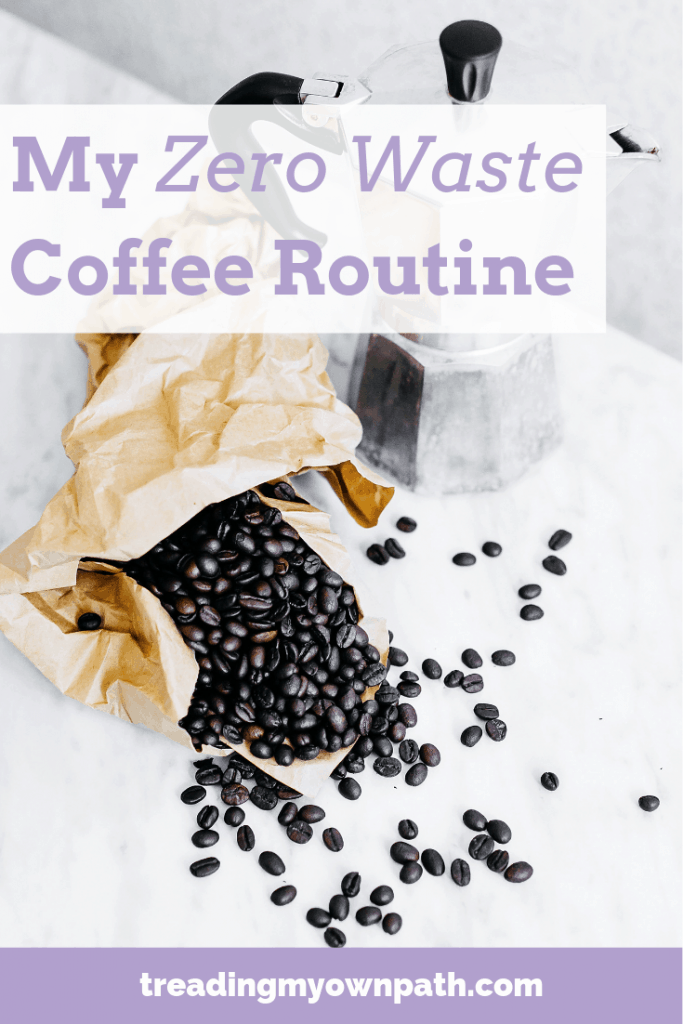
The Coffee Beans
I buy my coffee beans from a local roastery Antz. They source their beans in bulk from ethical co-operatives (such as this one in Colombia), roast the beans themselves and sell to customers without packaging.

They also have a grinder, so I get my beans ground freshly at the cafe.
It ticks a lot of boxes for me: supporting a small local business, supporting Fair Trade and cooperatives, and avoiding unnecessary packaging.
(It’s possible to find Australian grown coffee beans, but they grow on the other side of the country, in Queensland and northern NSW. I’ve never seen these beans in store, only online. And always in plastic.)
The Milk
My old coffee machine had a steam wand to foam milk. The lever espresso machine does not. I add homemade cashew milk to my coffee, and it needs to be warmed first. (Cashew milk has a tendency to sink when added cold, which isn’t a disaster; other plant milks will curdle if not heated before adding to coffee.)
I discovered that such a thing as a stovetop milk steamer exists, and invested in a Bellman stovetop steamer. It’s like a mini pressure cooker: fill with water, screw the lid down tightly and heat. The water builds up steam which is released down the steam wand to make steamed milk.
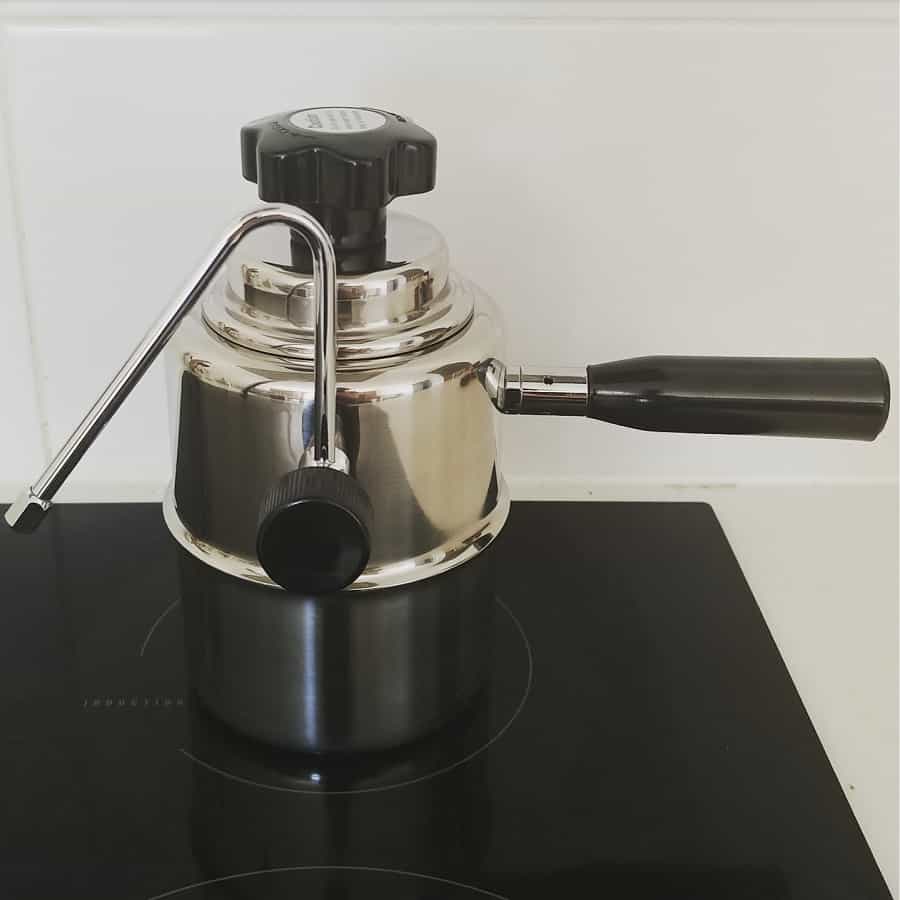
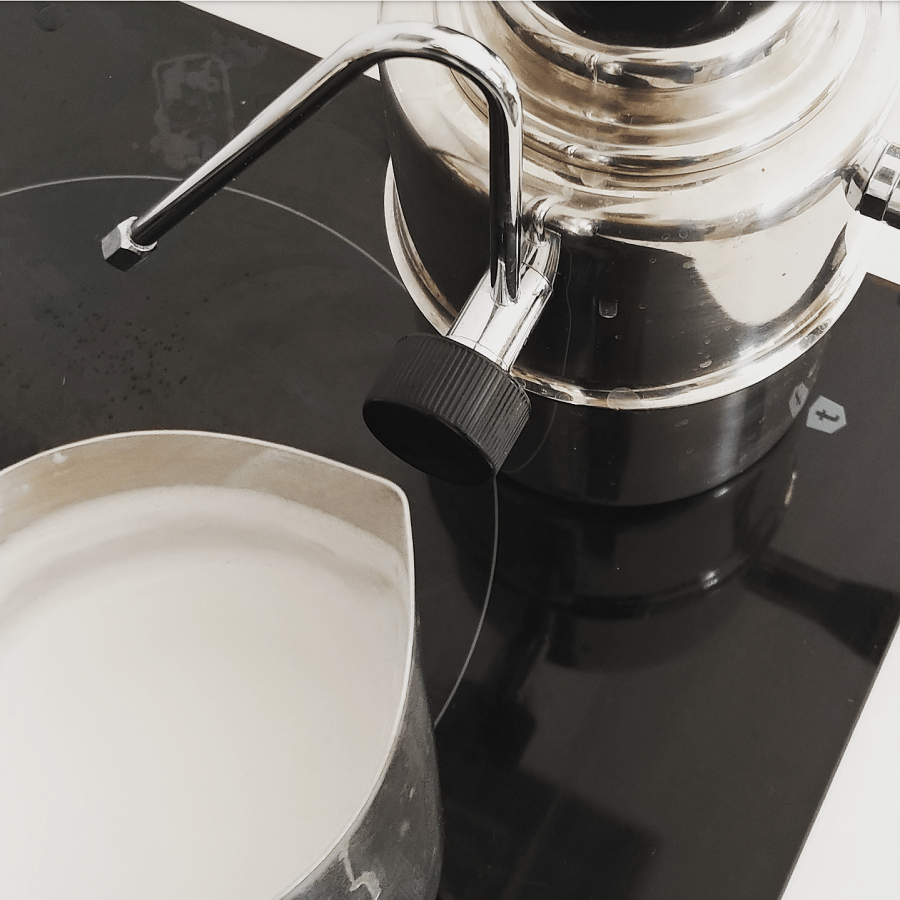
It’s a pretty nifty gadget, suitable for gas, electric or induction stovetops (or campfires!). Being made of solid stainless steel, it should last forever (there are a couple of silicone rings that no doubt will need replacing, but that’s it).
The Coffee Machine
I’ve already introduced you to the ROK espresso machine, but I thought I’d talk you through how it works.

The ground coffee is placed in the portafilter which locks into the machine. boiling water is poured into the black water tank at the top. Lifting the arms slowly releases the water into the coffee below.
Next, pressing the arms slowly back down to their start position over about 30 seconds, the machine pours an espresso, which I then add steamed milk to.
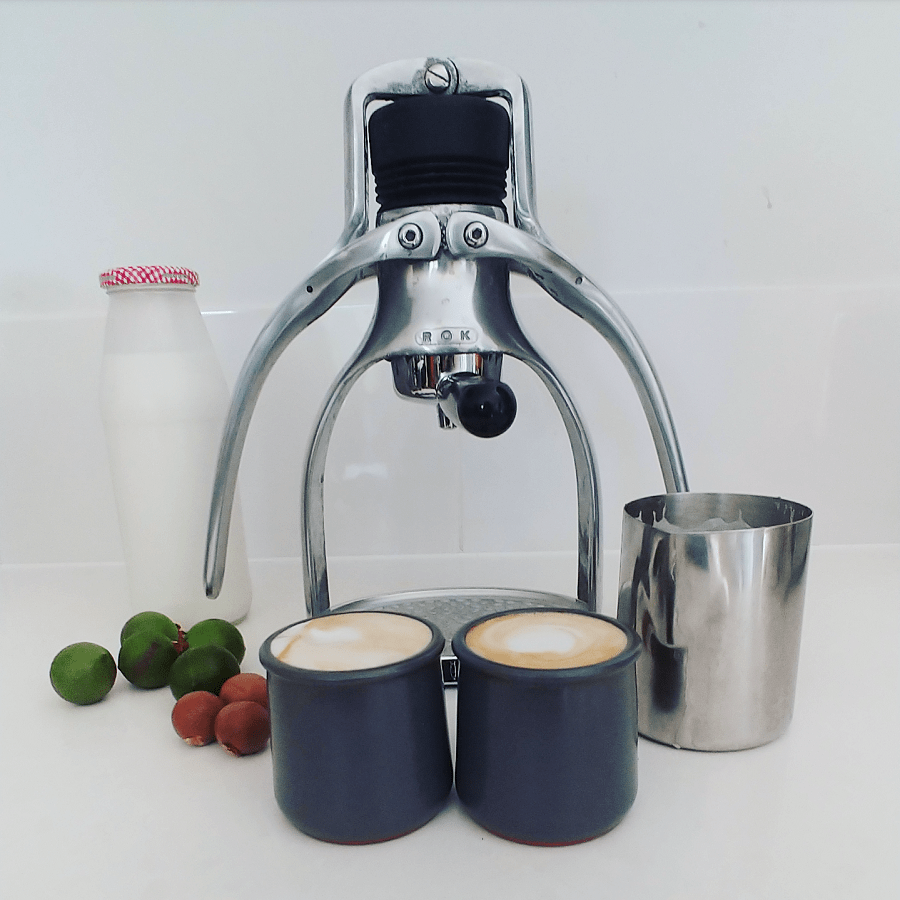
There’s a bit of an art to it, which is actually the point – however, it can be a bit intimidating at first, especially when we’re used to pressing a button. Fortunately there’s a few YouTube videos out there, and it’s fun to practice and learn.
There’s something very mindful about making coffee this way. I really enjoy the way it makes me slow down, and I like the ‘unplugged’ process. It makes my ”coffee break’ an actual break! It’s also really easy to clean, which is always a win in my book.

Find out more about ROK coffee.
Now I’d love to hear from you! Are you a coffee drinker? What is your morning routine and what are you doing/have you done to make it a little bit more sustainable? (It doesn’t have to be coffee – it can be tea, it can be exercise, it can be a beauty or bathroom routine – whatever it is for you!) Anything else to add? Please share your thoughts below :)
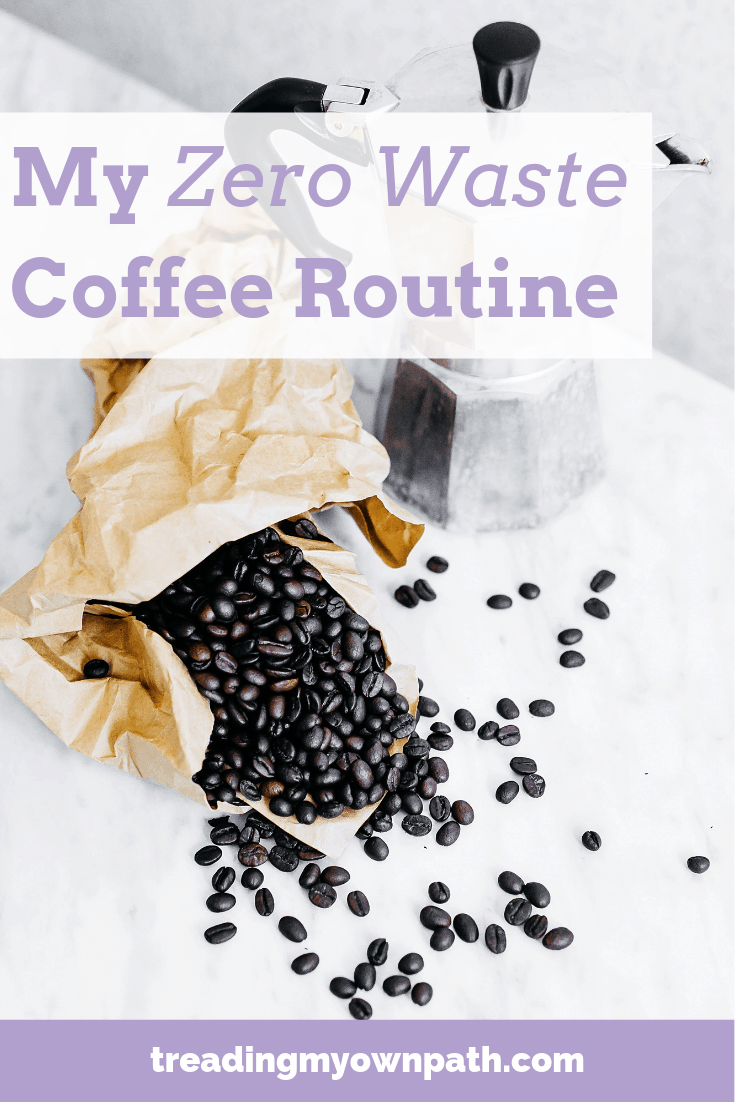

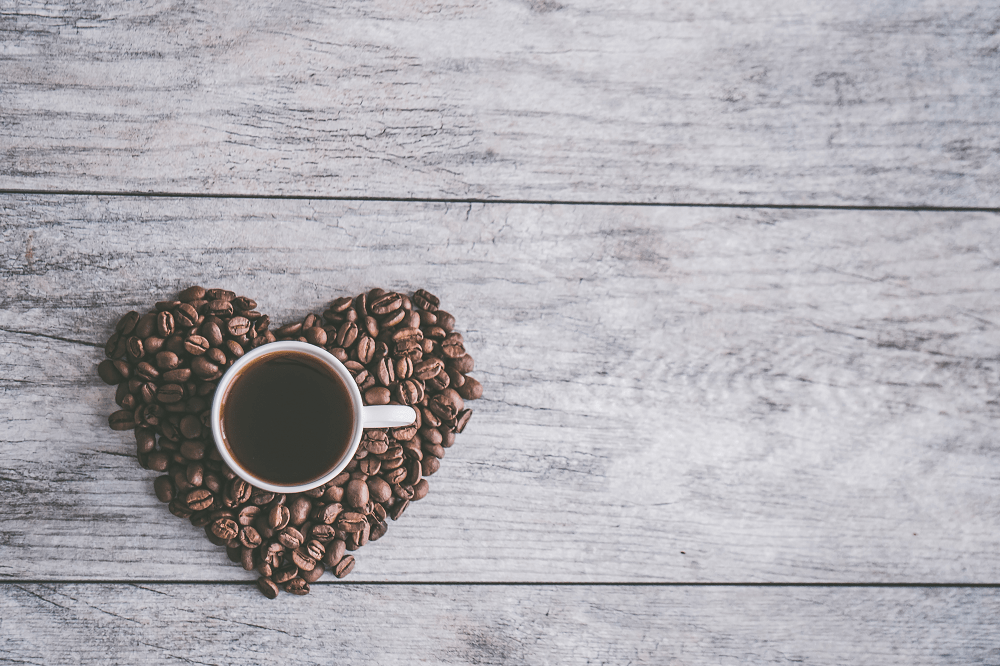





I start my morning with a Fairtrade, Organic Coffee. Like yourself, I realise there is inherent complexities around coffee – but I love it! Breakfast is usually pretty simple, either homemade porridge from bulk store oats, or homemade bread.
I’ve also been trying to reduce our waste where I can in the bathroom, and use more natural products on my body. I’ve been making my own soap (which I also wash my hair with), deodorant and hair product. The only other products I use are moisturiser and toothpaste, I’d like to one day make the switch but I’m just not there yet on the toothpaste front, and have yet to find a solution to moisturiser that doesn’t clog my pores.
I then catch the train to work to reduce my carbon emissions.
In the morning, we make oatmeal for breakfast. We’re using what comes from a friend’s garden to make it and keep it sustainable.
Part of the morning routine actually starts the night before when I set up my hubby’s coffee in his filter machine. Since he is the hero who gets up and makes the morning drinks, I try to make it worth his while – all he has to do is click the on-switch :-) He is quite choosy in his coffee but I have been testing out various fair trade and decaff varieties to tempt him away from the larger corporations. Rather than a kettle, we have a hot-water dispenser which only heats the amount of water needed to make my tea. Alas, there is nothing eco-friendly about the tea bags (and I have no palette so anything goes), however all coffee grounds and tea leaves feed the garden compost bin. I moved to loose tea but hubby definitely didn’t like the reuseable tea bags I cobbled together from recycled clothes or muslin cloths… Instead, I have started using a teapot and strainer like my grandma – simpler and no sewing needed!
My morning routine is all about coffee. I make a cup and crawl back in bed until my brain is engaged.
I toss out so little these days if I can reuse (not as in hoarding). Bags, jars, containers all get re-used as often as possible.
Wow what a great little machine! Never knew they existed, will have to look into further.
Thanks for the review!
I love to walk my dog as my morning routine (and she gets very grumpy if I don’t). I’ve been slowly changing products in the bathroom, as one thing runs out I move on to a more sustainable option. I’ve moved to using a safety razor, bar shampoo/conditioner/face wash/body and bamboo toothbrush. My next step is plastic free toothpaste (would love any advice you have!?).
My breakfast regime is now more sustainable – we have got a milkman, so returning the reusable bottles has cut down on our plastic waste enormously. Also, I eat the homemade granola that my girlfriend makes with nuts, seeds and oats that we ordered from a plastic-free shop online (no bulk shops near us) and the homemade yoghurt. Sometimes, I will have a poached egg on toast (we buy eggs loose and reuse our old boxes). We buy our coffee from plastic free online shop and use a cafetiere.
I have just been using oil and rose water to cleanse and tone my face for years, but recently have been gradually changing my make up as it runs out so that my beauty regime becomes more sustainable. I now have a Zao bamboo palette with eyeshadow refills – the refills are small tin discs that stick to the magnets in the palette. I will next try the small tins of eye coal (fat and the moon) as a mascara replacement.
Also, as our counsel does not offer recycling for flats, I have started taking a small bag of recycling to work on some mornings, so that it doesn’t go into landfill. It is possible to do it as we’ve cut down so much on packaging recently. I feel a bit silly travelling on the tube with a bag of recycling but hey ho – more incentive to cut down on packaging even more.
I have an almost zero waste breakfast routine that makes me happy for its simplicity and how optimal it is. I eat quick oats with sultanas, both of which I buy package free from local bulk stores. It makes me so happy to have such an optimal breakfast not matter what way I look at it – it’s very healthy, super cheap and zero waste so I never waste any energy thinking if I should be eating something difference. I also drink a loose leaf cup of tea each morning, which is also purchased package free. The only packaging is my milk that goes on cereal and into the tea, but I’m hoping to access package free milk soon.
I am so happy I came across your blog. I was searching for info about recycling Tetra Paks and clicked on yours (very valuable information on its own – thank you for that! All glass or steel cans for this family from now on…)
Each morning my husband and I have coffee using a small stainless steel French Press and fair trade beans purchased from our local Coop.
We’d love to try the ROK espresso lever press. (And our daughter will get our stainless steel French Press ☺️)
The Rok is beautiful.
My morning routine is usually my own personal tea ceremony. It begins with boiling the water in a stovetop kettle (less parts to break, easier to maintain). A splash of boiling water is added to my dedicated tea flask to warm it up. A splash is added to the tea pot to warm it up. I then discard the water to a bucket in the sink (to cool and then used to water indoor plants). Tea is carefully measured out with my favourite teaspoon, which was a purchase on my last (as in final) trip overseas (I have committed to not flying due to aviation emissions).
The slightly cooled boiled water (water past boiling point can spoil tea), is poured slowly over the tea, and with a little height to give it some oxygen.
The tea steeps for a few minutes, depending on tea variety and strength needed.
I use to at this point put a splash of milk in the cup, but I am transitioning away from using any milk – plant or otherwise. The quality of the tea can really come through without milk.
Then the tea is strained into the thermos, so that multiple cups can be enjoyed hot over the morning, without needing to reheat.
And lastly then poured into my cup, which I then take with a book to sit in a sunny position for a few moments of peace.
I usually drink instant coffee, and it comes with a glass jar and a plastic lid. It’s not really sustainable, but I’m not sure what else I could switch to.
I begin my day with a shower using a natural shampoo/body soap bar and finish off with my latest lotion bar I made using bee’s wax, coconut oil and shea butter. It leaves my skin feeling really nice, but I think for the next batch I will add essential oils so I don’t smell like bee’s wax!
Hi Lindsay. I’m loving your coffee info about the ROK machine. I live in Sydney suburbia and apart from our chooks, duck, frog ponds, native bee hives, veggies and other edibles, we have a little coffee tree. I harvest a couple of times throughout the year and slowly go through the process of fermenting and drying. After dehusking we pop the beans in an old popcorn maker for roasting. Then store. Little hand grinder for grinding and hey presto! Single courtyard origin makes me appreciate every drop! Into the stove top coffee perc and the house smells fabulous.
lovely to read your post. We all need to be a little more mindful of how we approach our coffee routines – perhaps a little less speed ( those depressing little capsules …) and more time spent brewing a cup of coffee will make us appreciate just what an incredible journey those coffee beans have had – from their home of origin to our homes.
next stop please – tea . let’s get rid of those wretched tea bags! DM if you want some tips on this – !
Good to see you are not using a full machine and those little capsules are a nightmare.
Well I am happy to use either my stove top coffee maker, bought many years ago, or an Aero Presse which I like, as it is simple and easy to clean. I like the idea of the milk frother though.
Recently renovated and cleaned up my old Optimus choofer stove, bought in early ’80s. It runs on Shellite (refined petrol) so not sure how sustainable (or safe in the house) it is, but it is nice to use something that looks good and continues to work well, despite being 30+ years old.
So sometimes I use the old stove for tea/coffee while having my oats, barley, rye or buckwheat porridge.
“There are worse ways to have a footprint. If I’m going to drink coffee, the least I can do is make it as low impact as possible.” We can all justify our bad habits. “There are worse ways to have a footprint. If I’m going to fly international three times a year, the least I can do is fly cattle class.” etc etc.
Hi.
I’ve been looking at this coffee maker and I’m very interested in it. Only issue is that I’ve been thru medical treatments and have neuropathy in my hands, I often have swelling and pain and i have difficulty doing things some days.
I’m curious as to the amount of effort required to raise and lower the handles. (I’m hoping it will require minimum effort and not increase my level of discomfort and pain). I want to be able to make my own coffee in the morning and not rely on someone else. Is it something you could do with one finger? Or does it require you to hold on and slowly push down?
Thanks in advance
Really good question, Nic! You do need to press down firmly, definitely not with one finger or even one hand (the pressure needs to be distributed equally to both sides). But you don’t need to grip or use your fingers. It would totally be possible to press with the palm of your hands or even the heel bit (is that what it’s called? At the base of the hand by the wrist). The effort comes from your arms, not your hands. But putting the coffee basket in, that requires gripping the handle and twisting. There are lots of videos of how it works actually on YouTube, coffee geeks love this stuff and like making movies, so have a look and see if you think it would work for you. I think the pressing part would be fine, but the basket placing part might not. Hope that helps!
Love your informative article, thanks for sharing such an informative article on coffee,
thank you for sharing such a nice article, it was worth reading, will recommend others.